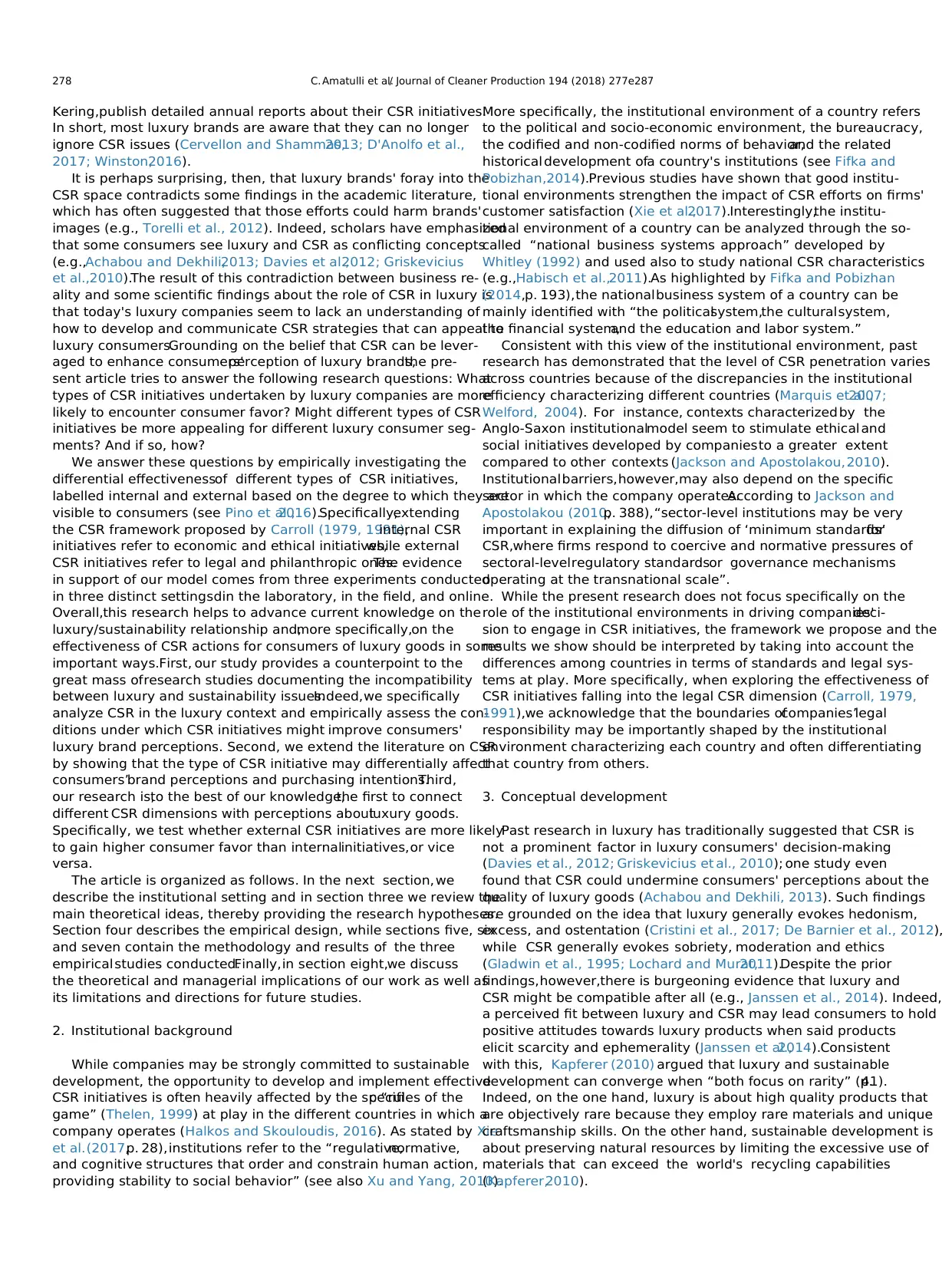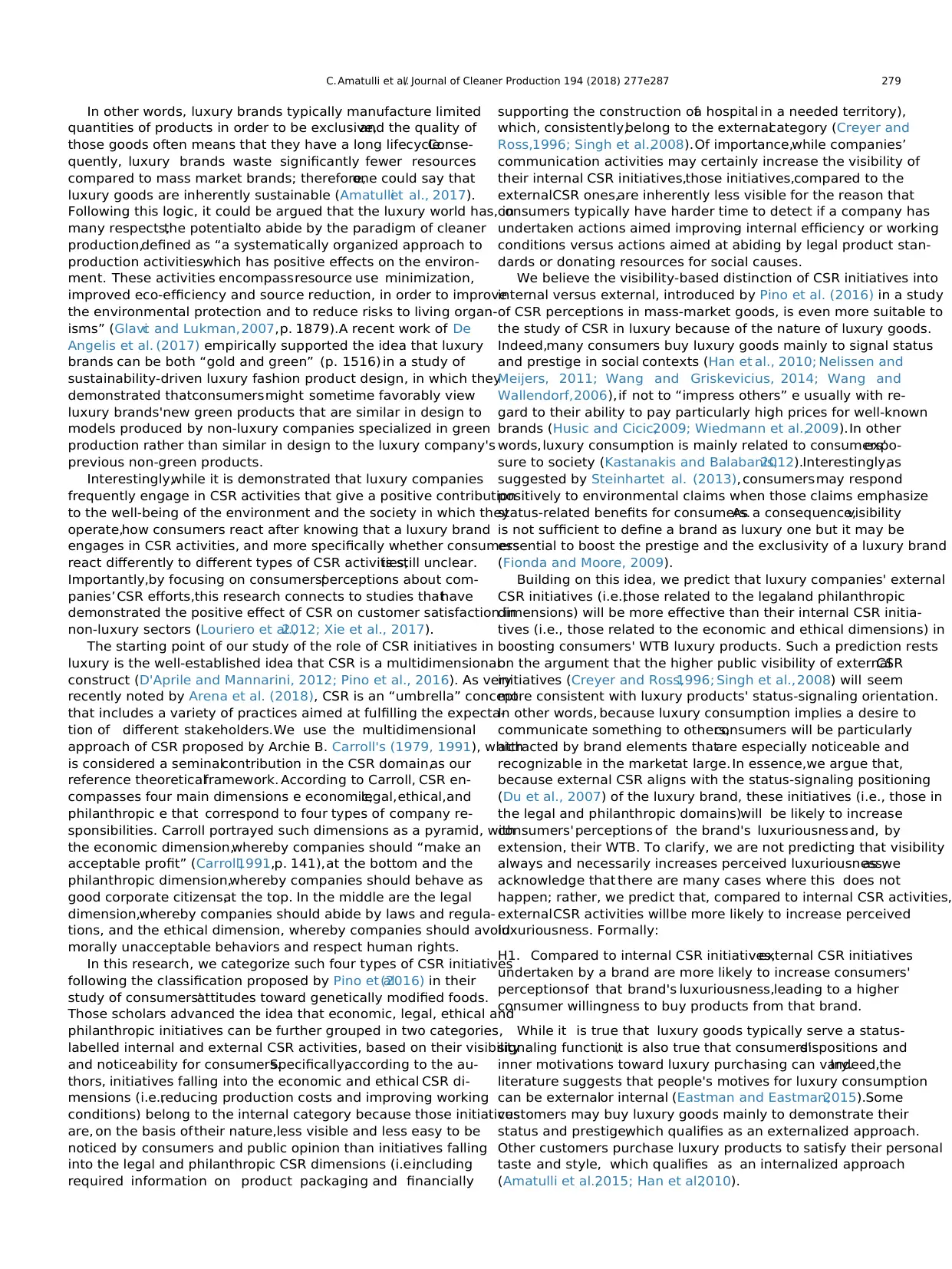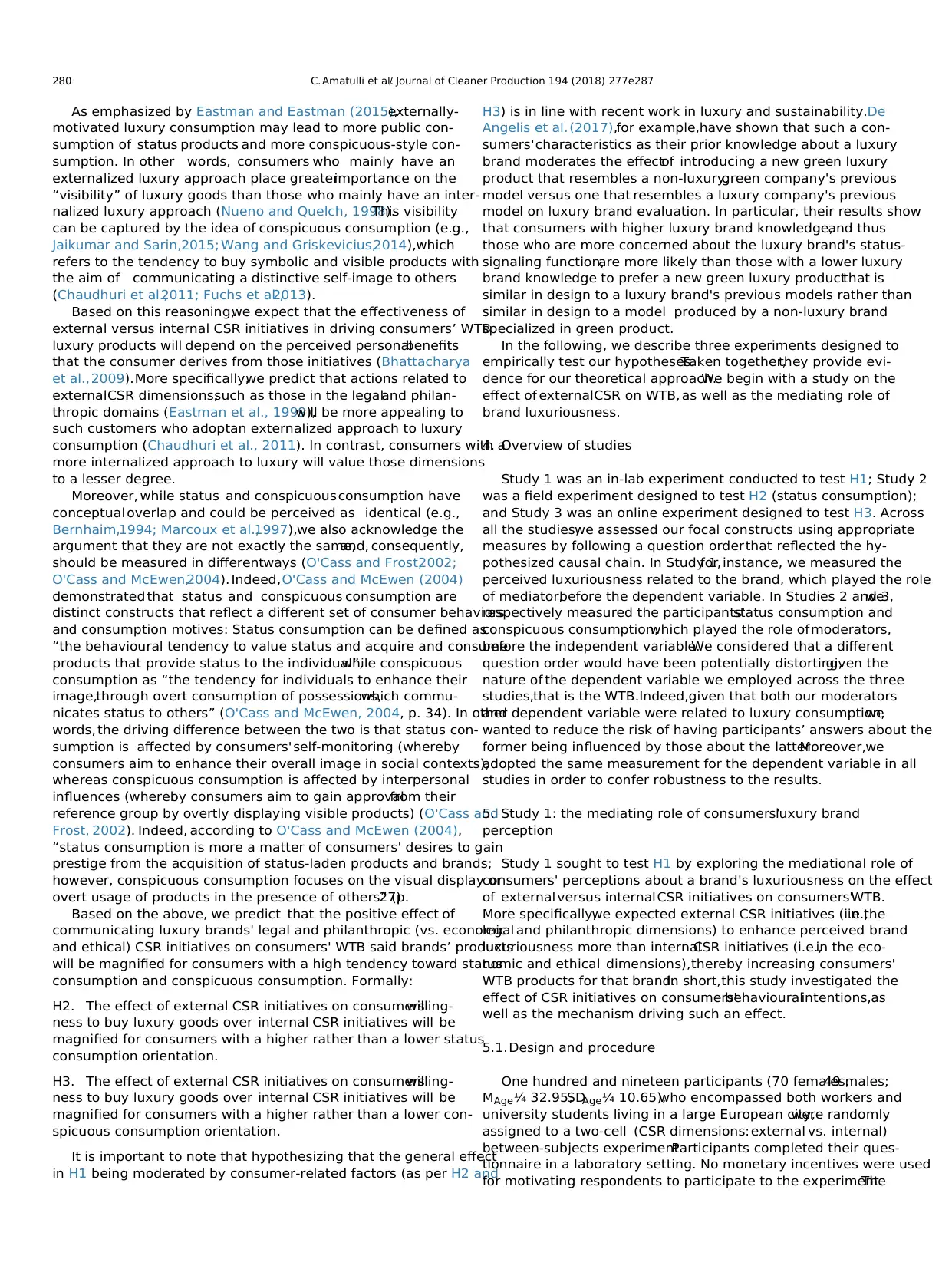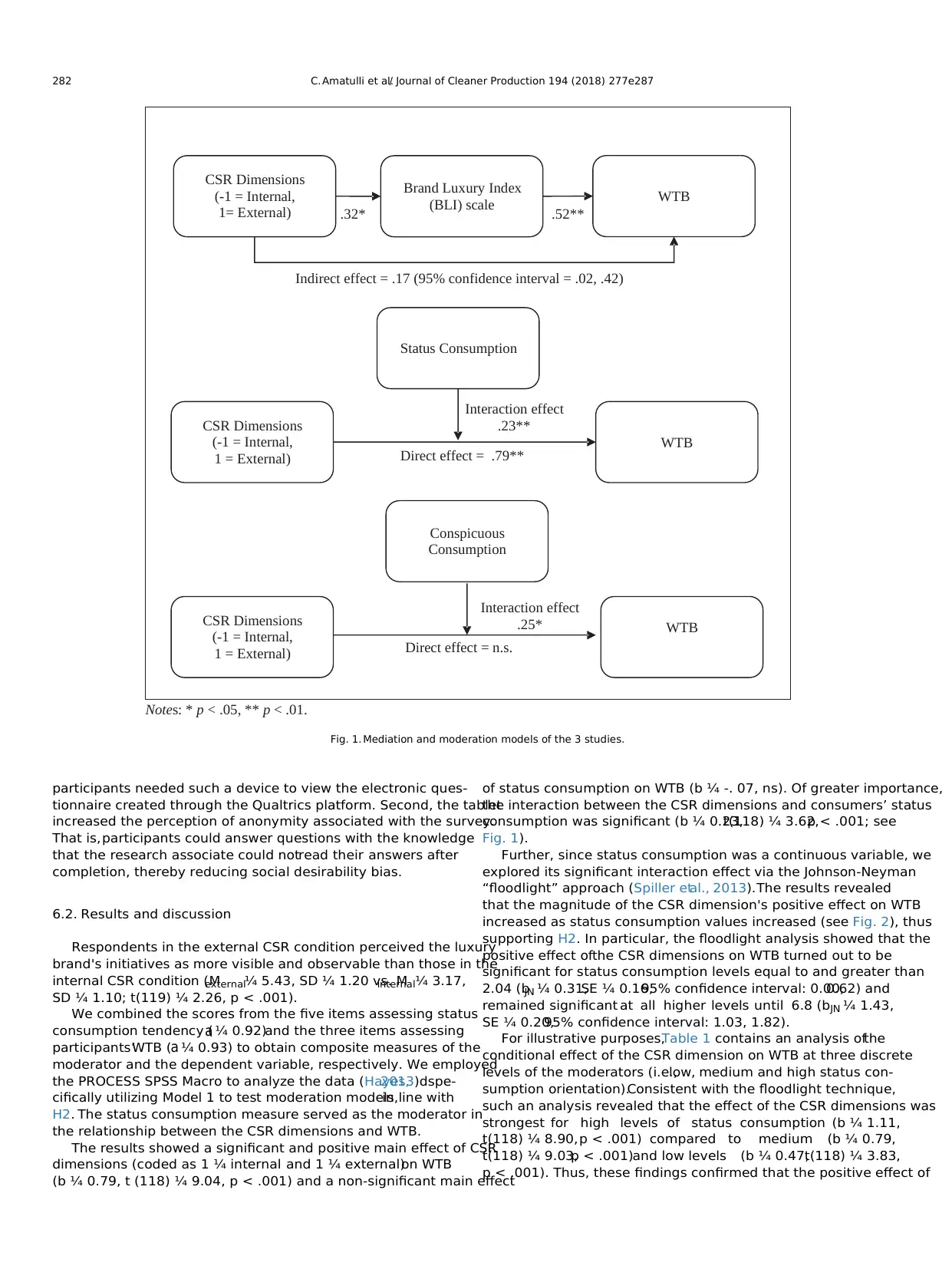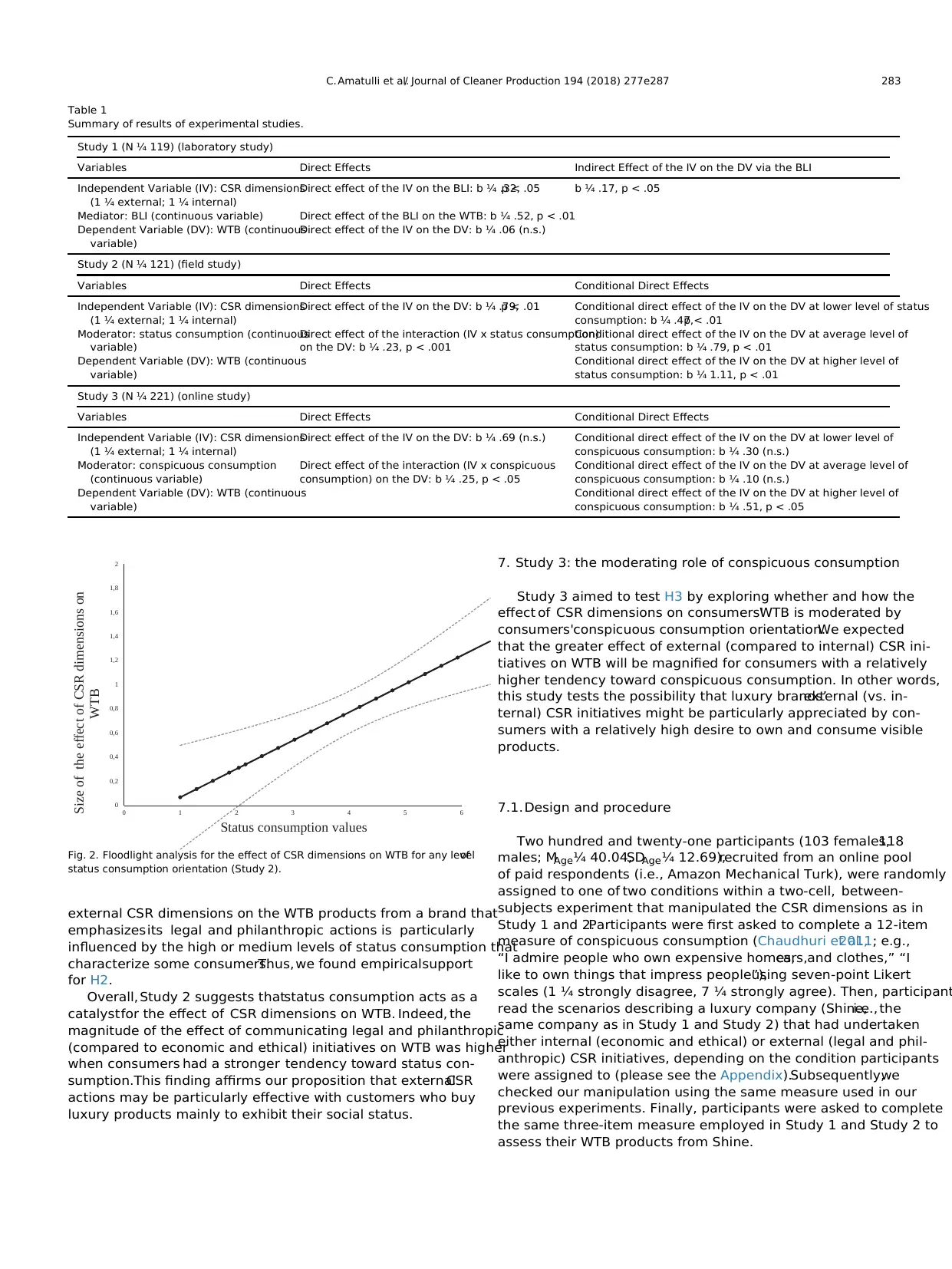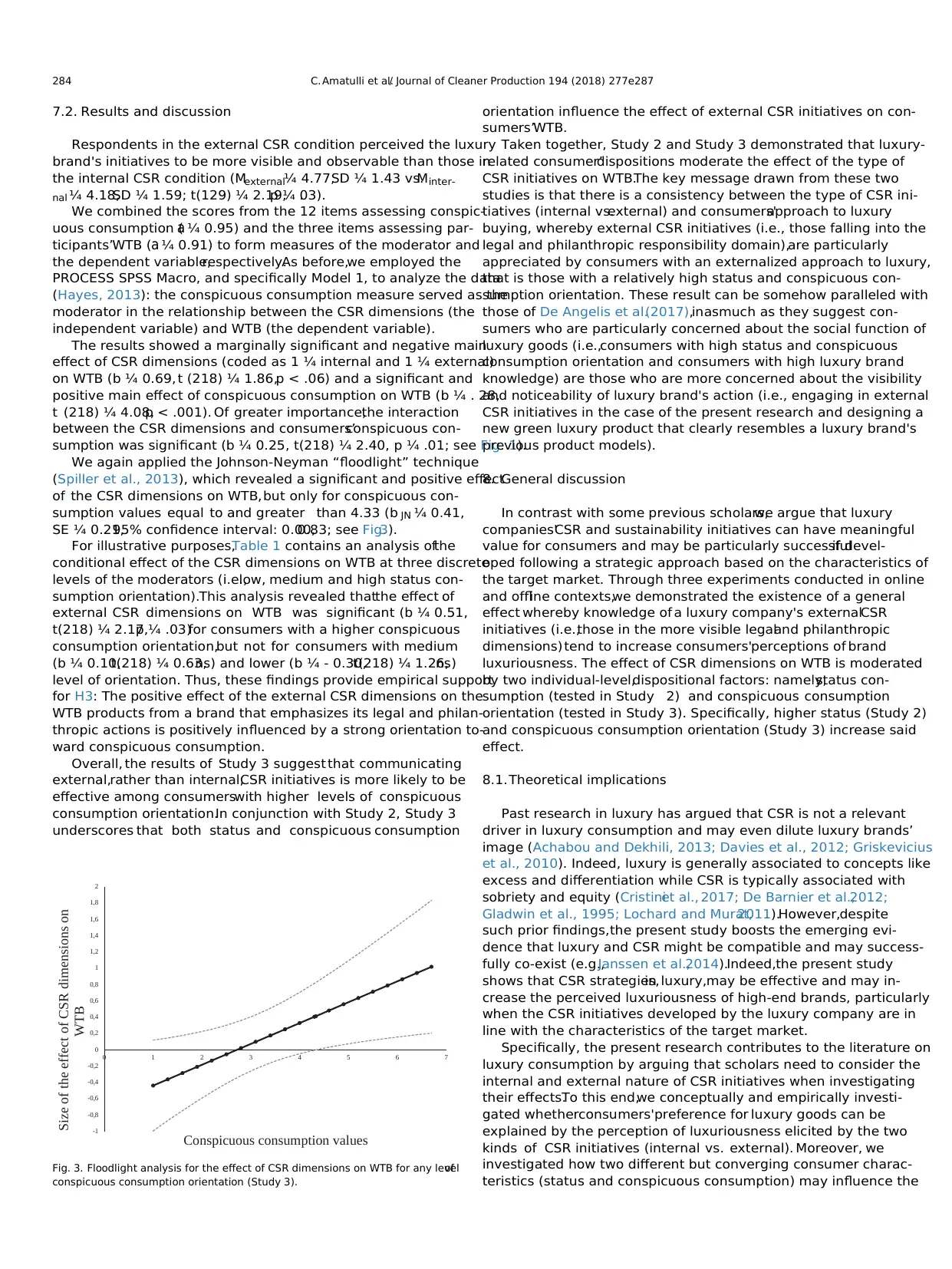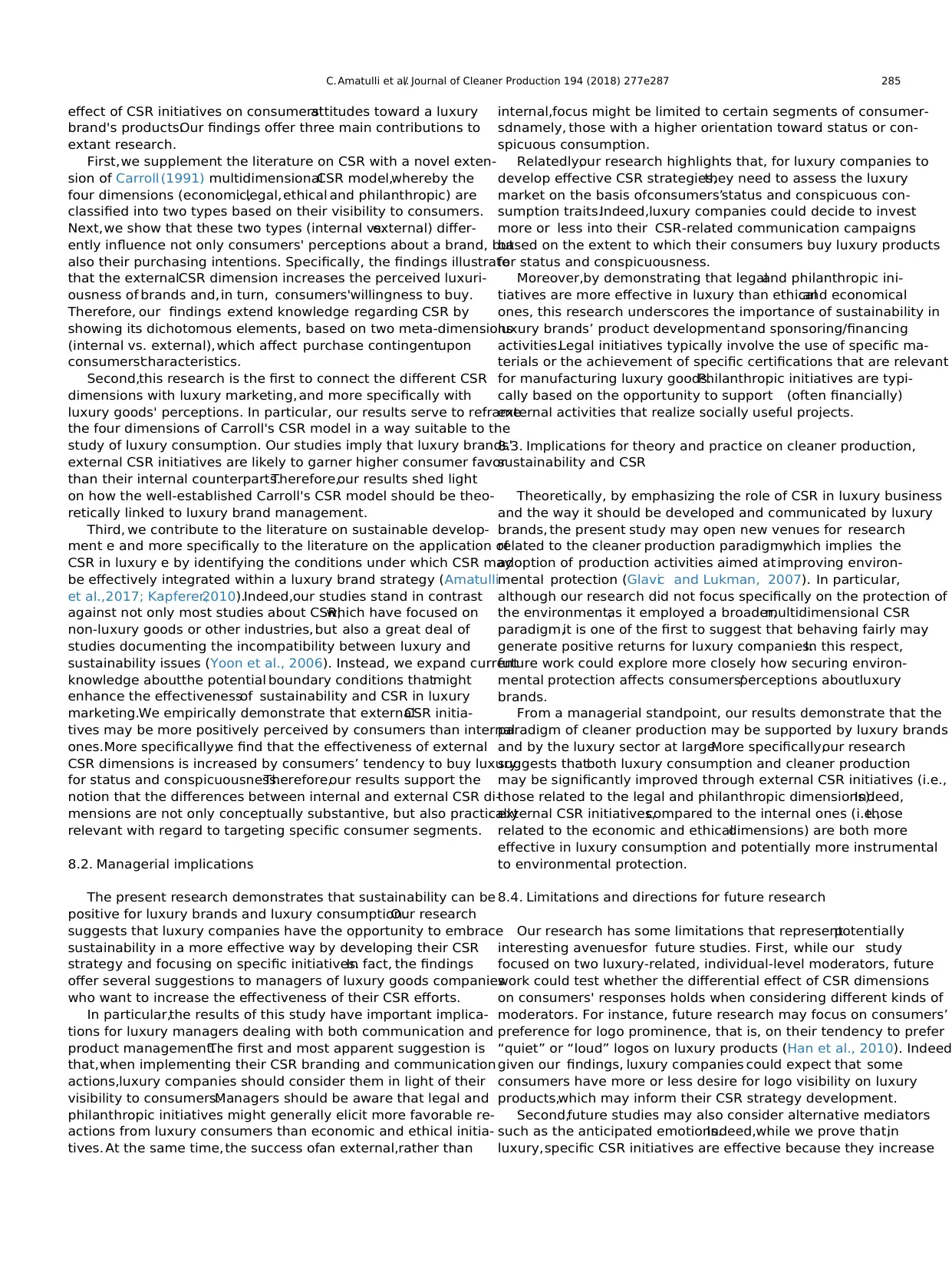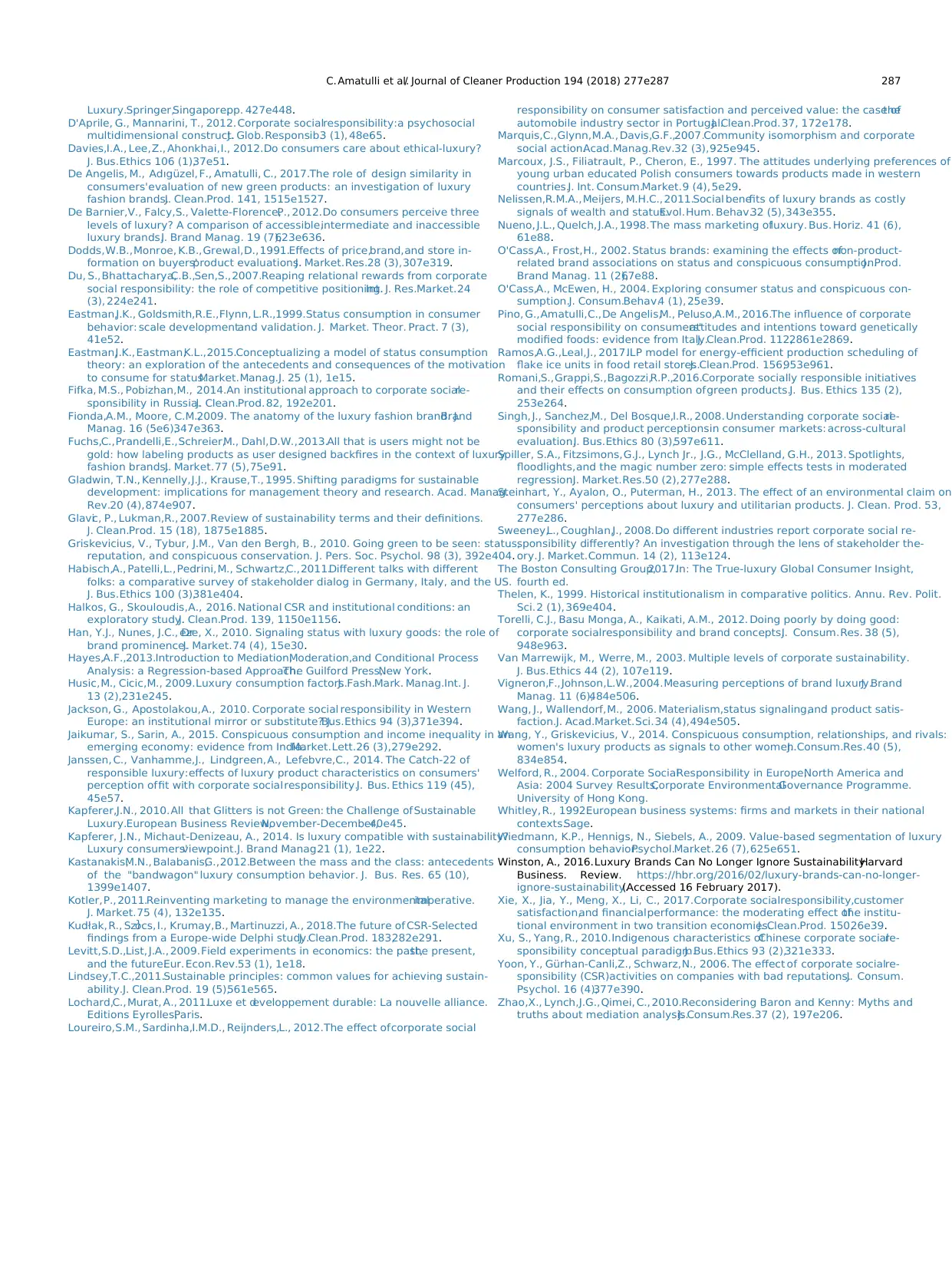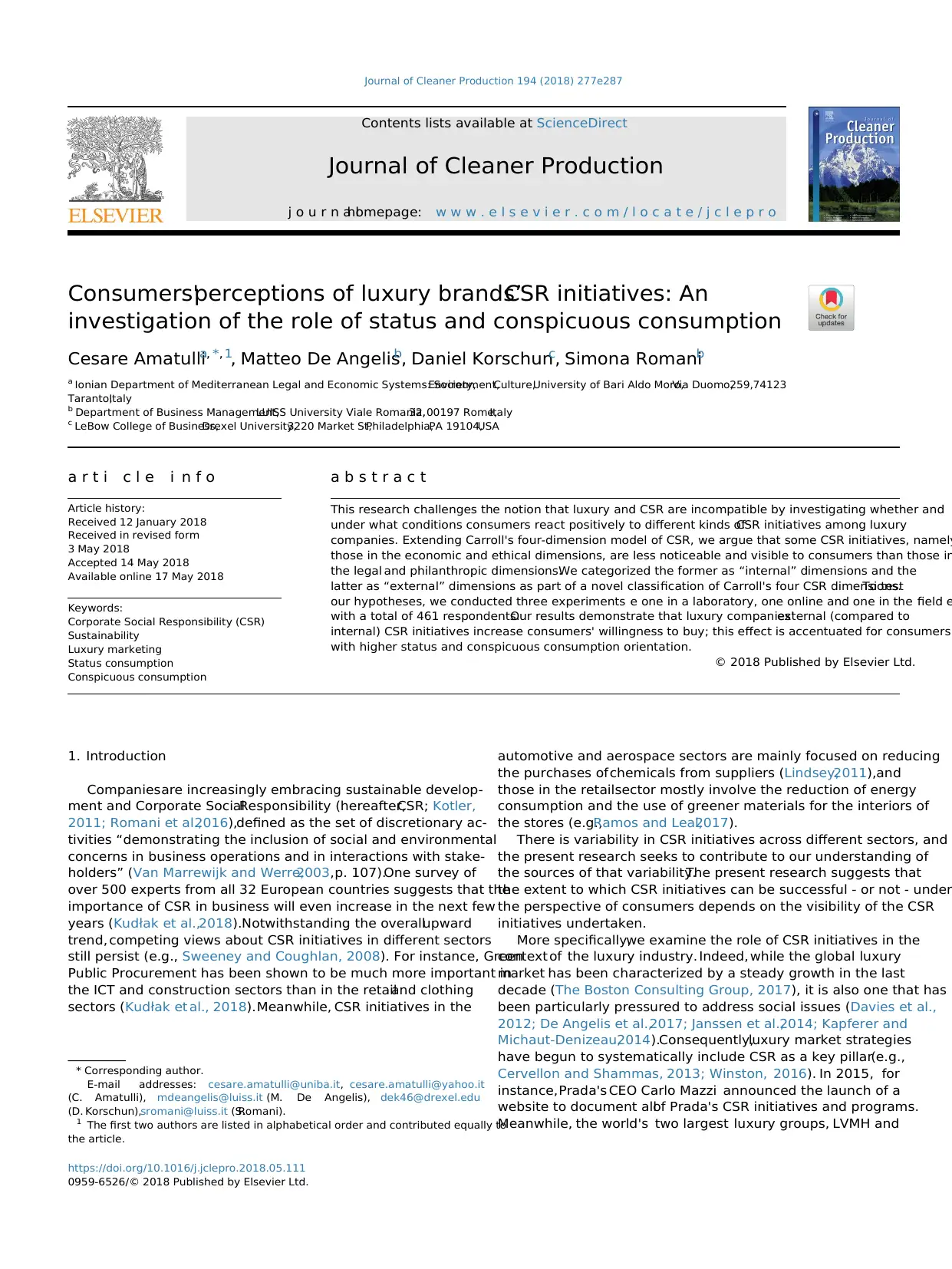
Consumers'perceptions of luxury brands’CSR initiatives: An
investigation of the role of status and conspicuous consumption
Cesare Amatullia, * , 1
, Matteo De Angelisb
, Daniel Korschunc
, Simona Romanib
a Ionian Department of Mediterranean Legal and Economic Systems: Society,Environment,Culture,University of Bari Aldo Moro,Via Duomo,259,74123
Taranto,Italy
b Department of Business Management,LUISS University Viale Romania,32,00197 Rome,Italy
c LeBow College of Business,Drexel University,3220 Market St,Philadelphia,PA 19104,USA
a r t i c l e i n f o
Article history:
Received 12 January 2018
Received in revised form
3 May 2018
Accepted 14 May 2018
Available online 17 May 2018
Keywords:
Corporate Social Responsibility (CSR)
Sustainability
Luxury marketing
Status consumption
Conspicuous consumption
a b s t r a c t
This research challenges the notion that luxury and CSR are incompatible by investigating whether and
under what conditions consumers react positively to different kinds ofCSR initiatives among luxury
companies. Extending Carroll's four-dimension model of CSR, we argue that some CSR initiatives, namely
those in the economic and ethical dimensions, are less noticeable and visible to consumers than those in
the legal and philanthropic dimensions.We categorized the former as “internal” dimensions and the
latter as “external” dimensions as part of a novel classification of Carroll's four CSR dimensions.To test
our hypotheses, we conducted three experiments e one in a laboratory, one online and one in the field e
with a total of 461 respondents.Our results demonstrate that luxury companies'external (compared to
internal) CSR initiatives increase consumers' willingness to buy; this effect is accentuated for consumers
with higher status and conspicuous consumption orientation.
© 2018 Published by Elsevier Ltd.
1. Introduction
Companiesare increasingly embracing sustainable develop-
ment and Corporate SocialResponsibility (hereafter,CSR; Kotler,
2011; Romani et al.,2016),defined as the set of discretionary ac-
tivities “demonstrating the inclusion of social and environmental
concerns in business operations and in interactions with stake-
holders” (Van Marrewijk and Werre,2003,p. 107).One survey of
over 500 experts from all 32 European countries suggests that the
importance of CSR in business will even increase in the next few
years (Kudłak et al.,2018).Notwithstanding the overallupward
trend, competing views about CSR initiatives in different sectors
still persist (e.g., Sweeney and Coughlan, 2008). For instance, Green
Public Procurement has been shown to be much more important in
the ICT and construction sectors than in the retailand clothing
sectors (Kudłak et al., 2018).Meanwhile, CSR initiatives in the
automotive and aerospace sectors are mainly focused on reducing
the purchases ofchemicals from suppliers (Lindsey,2011),and
those in the retailsector mostly involve the reduction of energy
consumption and the use of greener materials for the interiors of
the stores (e.g.,Ramos and Leal,2017).
There is variability in CSR initiatives across different sectors, and
the present research seeks to contribute to our understanding of
the sources of that variability.The present research suggests that
the extent to which CSR initiatives can be successful - or not - under
the perspective of consumers depends on the visibility of the CSR
initiatives undertaken.
More specifically,we examine the role of CSR initiatives in the
context of the luxury industry. Indeed, while the global luxury
market has been characterized by a steady growth in the last
decade (The Boston Consulting Group, 2017), it is also one that has
been particularly pressured to address social issues (Davies et al.,
2012; De Angelis et al.,2017; Janssen et al.,2014; Kapferer and
Michaut-Denizeau,2014).Consequently,luxury market strategies
have begun to systematically include CSR as a key pillar(e.g.,
Cervellon and Shammas, 2013; Winston, 2016).
![[object Object]](/_next/static/media/star-bottom.7253800d.svg)
![[object Object]](/_next/static/media/star-bottom.7253800d.svg)

